Meet the Stock Market's New Investors
A new wave of mostly young and fearless individual investors is taking the stock market by storm.

David Nathanson remembers the moment when the frenzied and risky world of day trading took hold of him. While working at home in late January during the pandemic, his phone lit up with a text from a friend: “Look what’s happening with GameStop!”
The 30-year-old software account exec from Brooklyn, N.Y., wasn’t totally new to investing when the troubled video game retailer became an overnight sensation earlier this year, going from a brick-and-mortar Wall Street laggard to a white-hot “meme” stock. In March 2020, to ward off lockdown boredom and stay connected to friends who were trading stocks on investing apps, he signed up with a discount broker. He invested $5,000, mainly in stable buy-and-hold stocks. Apple. Walt Disney. General Motors. “My little pod of blue chips,” he calls them. But aside from a winning trade in COVID-19 vaccine maker Moderna (“I felt like a genius,” he says), nothing got him excited about investing.
That changed when GameStop’s David-versus-Goliath story line went viral. The shares (symbol GME) were powered by amateur day traders who banded together on the social media site Reddit to orchestrate a buy-GME campaign, waging war with powerful Wall Street hedge funds that were betting shares would fall. Nathanson went to Reddit’s WallStreetBets online community—ground zero for the GameStop meme, a frat-house-like hangout for crass-talking individual investors prone to group-think, speculation and a “take down Wall Street” mentality.

Sign up for Kiplinger’s Free E-Newsletters
Profit and prosper with the best of expert advice on investing, taxes, retirement, personal finance and more - straight to your e-mail.
Profit and prosper with the best of expert advice - straight to your e-mail.
“Every post was like, ‘GME is going to the moon!’ ” says Nathanson. “I thought, Okay, I don’t want to miss out on the fun.” He spent $2,000 to buy 22 shares of GameStop at $90 a share. A few days later the stock opened at more than $350, and there was talk on Reddit of more big gains to come. He invested $2,000 more. “A fatal mistake,” he says. GameStop hit $483 on January 28 before crashing in the wake of trading restrictions imposed by Robinhood and another discount broker. Nathanson got out, but not before the shares plunged 90%. He lost $2,600 of his original $4,000 investment and kicks himself for ignoring time-tested investing principles and not keeping his emotions in check. “Do I wish I sold at $483? Sure. I was up nine grand. That’s not chump change. But it’s okay. I look at it as the price of admission for a really fun week. It was like an adrenaline rush.”
Meet the new generation
The GameStop frenzy introduced the world to the 21st-century day trader, part of a movement—a revolution, really—ignited by zero-commission trades, turbocharged by the herding power of social media and capable of creating euphoria for winners and despair for losers. Tools of the trade include an explosion of real-time data available to anyone with an internet connection and easy-to-use apps that make investing as fun and seemingly as simple as playing a video game.
Powerful political forces such as populism and wealth inequality have amplified the trend. The growing clout of individual investors, often disparaged as “dumb money,” is the latest chapter in the democratization of investing that is leveling the playing field between Wall Street and Main Street. This new generation of investors has emerged as a disruptive market force and caught the attention of regulators and lawmakers—not to mention the notice of practically anyone just trying to save for retirement or build wealth the old-fashioned way.
Questions raised include whether the short-term mentality of younger traders poses a risk to the long-term health of the market and whether the market is being manipulated—either by traders acting in concert or by brokers restricting trading in volatile stocks. Debates focus on whether new rules are needed to curb speculation, dampen volatility and improve disclosures about the hidden costs of free trades. Concerns have risen about trading apps that critics say provide incentives for risk-taking and frequent trading or nudge traders into unsuitable investments.
Day trading isn’t new, of course, and some of these concerns have come up before. Get-in-and-get-out-fast trading tends to flare up around market tops. In the go-go 1990s prior to the 2000 dot-com stock bust, day trading became all the rage in internet chat rooms with names like Raging Bull and Silicon Valley, spurred by online stock-picking stars such as Yun Soo Oh Park, better known as Tokyo Joe. The new generation of day traders is charting its own path. For now, among the best known is Keith Gill, who spearheaded the GameStop buying frenzy and goes by Roaring Kitty on YouTube (and something more irreverent on WallStreetBets).
But many of these new traders are more regular Joe than Tokyo Joe. They include people like Ryan McCormick, a 31-year-old deputy district attorney in Elko County in Nevada who has been trading Canadian cannabis stocks and pandemic-rebound plays. Or Michael Gray, 30, a painter from Kings Park, N.Y., who began investing in cryptocurrencies a few years ago. And Gen Z investing neophytes like Shawn Daumer, 20, a real estate agent in Valparaiso, Ind., who got in early on GameStop and was taken on a wild ride. As in past day-trading frenzies, there have been winners who made a bundle and losers, like Nathanson, who’ve suffered losses. Their stories follow.
Riding the wave
To understand the surge in trading by “retail” investors—a characterization that distinguishes them from professional or institutional traders—consider the new-player profile. A wave of investing advanced during the pandemic and accelerated this year due to the viral nature of the GameStop story. Most participants are newbies who skew young and inexperienced. Some 61% of new retail investors in the past year are younger than 34, a Deutsche Bank survey found.
A more telling portrait is painted by information on who was trading in January, when GameStop skyrocketed 1,625%. Roughly 40% of investors between the ages of 18 and 44 said they bought viral or meme stocks, according to a Harris Poll survey conducted in February, compared with 17% for people 45 or older. Forty percent of men said they placed trades—more than double the percentage of women. And more than two-thirds of investors who bought GameStop or another viral stock signed up for a brokerage account in the month prior to the survey, according to the Harris Poll. Data from JMP Securities show that in January, 3.6 million people downloaded Robinhood’s trading app, up 154% from average monthly account openings in 2020.
These first-time traders tend to take on more risk, Deutsche Bank found. They trade options and buy securities with borrowed money more often than people who’ve been investing longer. One thing that separates amateur traders from professionals is a tendency for novices to think only about the upside, says Mark Minervini, author of Think & Trade Like a Champion and a top trader featured in the book Stock Market Wizards. “All amateurs focus on is the reward. They don’t respect risk or contemplate the downside,” he says.
Michael Gray grew up talking about stocks with his dad, who works as a corporate director of risk management. “My dad was born to avoid risk,” says Gray, 30. “I definitely take more of a chance.” Gray opened a Robinhood account in 2017 and began day trading, dabbling in bitcoin, and hanging out in the online community StockTwits. “I’ve taken some beatings,” he says. “It helped me get much better at this stuff.”
His investing strategy recalls that of retired Fidelity Investments star fund manager Peter Lynch: “I invest in products that I use and companies that I believe in,” says Gray. A lifelong gamer who grew up playing soccer video games, Gray has owned shares of Advanced Micro Devices, which makes computer chips used in gaming consoles. He got in early on Plug Power, which builds hydrogen fuel cell systems used to power electric vehicles. But trading in and out of Plug proved costly. His average purchase price in 2017 was $2 a share, and he sold a big chunk when the stock broke $5. Shares now sell for $32. “I sold too early,” says Gray. Earlier this year, after GameStop plunged 90% from its high, Gray invested $500 in GME just “to be a part of it.” He broke even on the trade.
A pandemic-driven perfect storm
Credit a combination of free time, spare cash and tech innovation for the influx into the market. People with nothing to do during the shelter-in-place phase of the pandemic quickly discovered stock trading. An infusion of cash from government stimulus checks—dubbed “stimmies” by the Reddit crowd—provided capital to invest. More than half of the respondents in the Deutsche Bank survey cited above said they invested stimulus money in stocks. The ability to trade stocks for free with small sums of money added gas to the fire.
Boredom also propelled people to trade, says Nick Buttrick, a post-doctoral researcher at the Princeton School of Public and International Affairs. “Being part of a larger community fighting against Wall Street makes you feel like you’re doing something worthy,” he says.
Shawn Daumer, 20, started trading on his 18th birthday. His generation, he says, views investing differently than their parents do. “We’re not into holding long term and just letting it sit there,” he says. “Now, it’s trade throughout the day and make a buck. It’s not like you have to get your broker on the phone and see what he thinks.”
That go-it-alone mentality and the bullish talk on WallStreetBets is what attracted Daumer to GameStop. Nine days before GME topped out in late January, he spent $47,000 to buy 1,233 shares at $38.06 a share, using money from high school graduation gifts and profits from prior stock trades. At the peak, his GameStop stake was worth $595,000. “It was just numbers on a screen,” he says. He was confident the stock would keep climbing.
So he let the bet ride. “I definitely got greedy,” Daumer says. But when Robinhood and other online brokers restricted trading in GameStop to meet clearinghouse deposits and regulators’ capital requirements, the bubble burst, and a big chunk of Daumer’s paper profit disappeared. In early February, he executed a sell order at $91.22 per share, netting a profit of about $65,000. His one regret: “I didn’t have an exit strategy,” he says.
Fans of the game
Today’s youthful band of day traders grew up with the internet, socializing on their phones via text messages and Instagram. The same technology that got them hooked on video games such as Minecraft and Grand Theft Auto is now built into trading apps offered by Robinhood, Chinese-owned rival Webull and other upstarts that make stock trading feel a lot like playing a game on Xbox. Robinhood’s app, for example, offers users a chance to win a free share of a popular stock as a reward for getting a friend to sign up for the app, and it was known for tossing virtual confetti after a user’s first trade.
Although research shows a positive side to this gamification—for example, giving people an incentive to meet savings goals—critics argue that such techniques can be a disservice to investors if they are nudged toward negative outcomes. In the worst-case scenarios, critics say, gamification can encourage impulsive and risky trading behavior, such as concentrating holdings in a few stocks rather than diversifying; trading too frequently as opposed to investing for the long haul; and blindly pushing prices up to lofty levels with no business rationale to do so.
In December, Massachusetts securities regulators filed a complaint against Robinhood, alleging that its gamification strategies “encourage … continuous and repetitive use” of its trading app. Robinhood CEO Vlad Tenev has disputed the characterization, telling members of Congress at a hearing in February: “I’m confident that the easy-to-use interface enables customers to understand, control and direct their finances in a responsible way.” Still, in early April, Robinhood did away with its use of virtual confetti to mark investing milestones, replacing it with animations that are more restrained.
Attorney Ryan McCormick, 31, got interested in stocks in the spring of 2020 after graduating from law school and landing a job. “I was done with being broke,” he says. He had some money to invest, and his friends were trading on Robinhood, so he signed up, too. He found the app very user-friendly: “I don’t feel like I have to be a connoisseur of the market” to trade.

He didn’t dive headfirst into the market, preferring to first learn how trading works. The world inside the Robinhood app reminded him of his days working at a Nevada casino, where bells and flashing lights signal someone has hit a jackpot. “It has the same aspects as a slot machine,” he says.
McCormick’s first stock purchase, a trade made on his phone, was a tiny bet on American Airlines, a company battered by the pandemic that he figured would rebound. Last September, he used $25 to buy two shares of the nation’s largest airline that are now worth almost double what he paid.
Early this year, McCormick invested $240 in Canadian pot stock Aphria after reading in December about a merger with Tilray that would create the world’s largest cannabis company. The stock is down 38%, but McCormick is sure “it will eventually pay off.” He traded marijuana accessory firm Sundial Growers in February, making a $40 profit on an $80 investment. “It makes you think, What’s the next cool thing? What’s the next boom?” he says.
Exciting though it may be, however, winning at day trading isn’t easy. The top stocks purchased each day on Robinhood’s app, for example, are down 4.7%, on average, a month later, according to a paper coauthored by finance professor Brad Barber at the University of California, Davis that was published in February. A Sao Paulo School of Economics study of day traders in Brazil’s stock futures market found that it is “virtually impossible for individuals to day trade for a living.” Nearly all (97%) of investors who traded 300 days or more between 2013 and 2015 lost money, the study found.
No free lunch
Intense competition among online brokers has lowered commissions to zero and created new products that make it as easy for an hourly worker to invest as it is for a millionaire. Investors can now buy fractional shares or “stock slices” (if you can’t afford a share of Tesla for $677, for example, you can buy just a piece of a share). More than half of investors who bought viral stocks in January invested $250 or less, the Harris Poll found.
But although commission-free trades are now the industry norm, it’s worth reminding investors that nothing (on Wall Street, anyway) is truly free. Robinhood and other online brokers can offer free trades in part because they generate revenue from trading firms that pay the brokers to execute buy and sell orders placed by their customers. This practice, known as payment for order flow, has come under fire from critics who allege that it can result in customers getting their trades placed at inferior prices. Late last year, the Securities and Exchange Commission fined Robinhood $65 million for failing to fully disclose that its largest revenue source was routing orders to trading firms and for failing to ensure that customers got the best trade prices.
Moreover, the stocks favored by today’s day traders pose plenty of their own risks. Newbies focus mostly on distressed stocks or ones whose prices can be more easily driven up by herd buying. Examples include beaten-down stocks with low share prices such as automaker Ford; momentum-driven stocks such as Tesla; stocks with a big following on Reddit such as GameStop and movie theater chain AMC Entertainment; and shares of companies that have filed for bankruptcy.
Rental-car company Hertz is an example. In May 2020, the stock had plunged 80%, to 56 cents a share, after the company filed for bankruptcy protection partly due to a business drop-off caused by the COVID-19 shutdown. Day traders plowed into the stock, driving it up 887.5%, to $5.53, in just nine trading sessions—despite the fact there was a chance the stock could go to zero. Hertz has since been delisted from the New York Stock Exchange. The shares recently traded at $1.54 off-exchange.
Many of these stocks have been left for dead by most Wall Street investors but have a huge following among hedge funds that engage in short selling, an investment strategy in which you borrow shares from a broker and sell them with the hope of buying them back later at a lower price. The 2,400%-plus rally in GameStop from the start of 2021 to its intraday peak in late January was fueled by retail investors mobilizing together on WallStreetBets. Collectively, they essentially forced the hedge funds to reverse their bearish bets by buying back shares at higher prices, a trading phenomenon known as a short squeeze. The result was claimed as a moral victory by the online community that some say is shining a light on the political divide between America’s haves and have nots.
A social-media-magnified mania
Nearly 60% of investors age 40 or younger are members of online investment communities, a survey by personal finance site MagnifyMoney found. YouTube, the online video-sharing platform, was the top source for investing information among young investors, with 41% tuning in during January. Other social media sites visited to glean stock ideas include TikTok (24%), Instagram (21%), Twitter (17%), Facebook (16%) and Reddit (13%).
Reddit’s WallStreetBets has emerged as the go-to meeting place for young investors looking for home-run stocks. “It’s an all-or-nothing culture,” says Daumer, the Gen Z real estate broker. WallStreetBets is where amateurs tout stocks to buy, post screenshots of trading accounts with eye-popping gains or horrific losses, and poke fun at themselves after a trade gone bad. It has a language all its own (see "A Day Trader Dictionary," below). The growing community—9.8 million at recent count—has been instrumental in bringing new people into the market and turning some stock memes into mainstream plays that the whole world watches. “If it gains enough traction and goes viral, it is almost like a tidal wave,” says Gray, the painter from New York.
The problem is that trading driven by herd behavior on social media can make people do things that they might otherwise not do, for fear of missing out (also known as FOMO), says Denise Shull, a trading coach and author of Market Mind Games. Social media triggers tribal thinking that dates to prehistoric times, adds Brad Klontz, associate professor of financial psychology at Creighton University. “The prehistoric brain is designed to survive in a tribe of 100 to 150 people,” Klontz says. “What happens when you think the rest of the tribe (that is, all the people you see on social media making money while you watch) is moving in another direction? It creates existential panic, which leads to speculative moves.”
Some market watchers worry that the stock market’s main function, providing the capital to help companies and the economy grow, will be compromised by wild swings in stocks set in motion by day-trading individual investors. “When you see capital being allocated in a way that is completely disconnected from any reasonable valuation of the underlying security, you have to worry that the system is just broken,” says Tyler Gellasch, executive director at the Healthy Markets Association, a nonprofit that promotes stable and fair markets.
Another concern is wild boom-and-bust price action becoming more widespread. “If we see it again and again, it could break down confidence in the whole market,” says Amy Lynch, founder of FrontLine Compliance, which provides regulatory compliance services to investment firms.
And there’s a risk that the thrill of the chase for profits will turn recreational day traders into problem day traders. “A lot of day trading is indistinguishable from gambling,” says Keith Whyte, executive director of the National Council on Problem Gambling. Both “tend to hit the same pleasure and pain pathways that are activated in all risky and addictive behavior.”
Despite the downsides of the new day trading, simply exposing more people to investing overall is a positive step. Just half (52%) of American households are invested in the stock market, according to the Pew Research Center. “The stock market is the biggest wealth creator the world has ever seen,” says Dan Niles, founder of Satori Fund, a hedge fund that invests in large U.S. tech stocks. “If something like watching GameStop gets you interested in investing, that’s a good thing.” Still, “if you’re using money you can’t afford to lose and investing on nothing but emotion, that’s dangerous,” Niles says. Day trading “has to be the gateway to something more productive.”
Nathanson, for one, says he won’t ever again buy a stock just because he fears missing out. He’s back to buying mostly blue chips and setting aside a little “play money” to dabble in more-speculative stocks. “I need to be more analytical about things,” he says.
A Day Trader Dictionary
It’s often said Wall Street speaks a foreign language. But you’ll need an updated dictionary or a Gen Z translator to decipher the quirky internet slang favored by today’s new day traders.
- BAG HOLDER: Someone who buys a stock at a high price and is stuck holding it after it declines in value.
- DIAMOND HANDS: An investor who refuses to sell regardless of risks, headwinds or sizable losses—viewed as a sign of bravery.
- HODL: An acronym for “hold on for dear life,” used when an investment goes into freefall and losses and fear mount.
- LOSS/GAIN PORN: Screenshots of stock trades that show either eye-popping gains or huge losses.
- PAPER HANDS: Someone who gets spooked by downturns and sells shares at the first sign of trouble.
- POWER HOUR: The final hour of trading when day traders band together to push a stock higher.
- ROCKETS: High-octane, speculative stocks with big upside potential.
- TENDIES: A nod to chicken tenders, shorthand for profits made on a trade.
Policing the market
Wild price swings in viral “meme” stocks have raised concerns that the market is broken. Here are some potential rule changes to fix the problems.
Problem: Market Manipulation
Touting stocks on social media has raised the specter of market manipulation, as has restricting trades in viral stocks.
The fix: For the Securities and Exchange Commission to bring an enforcement action, current rules require clear signs of deceit or intent to knowingly mislead others. That appears absent so far in GameStop trading. The SEC is likely to update rules that define market manipulation, says law professor Charles Whitehead at Cornell University. New rules to ensure that brokers have the capital to avoid outages and trading halts during times of stress may also be considered, says Devin Ryan, an analyst at JMP Securities. One idea: stress tests, similar to the ones big banks have been subject to since the financial crisis.
Problem: Gamified Trading Apps
Apps make placing a stock trade as easy and as fun as playing a video game—and, critics say, more like gambling than investing.
The fix: Boost investor protections if it’s found that trading apps are “overriding full and accurate disclosure” of the risks investors face, Whitehead says.
Problem: Unsuitable Investments
Some discount brokers make it too easy for amateur investors to trade complicated securities such as options.
The fix: Strengthen lax rules to make sure brokers disclose risks and that investors both understand and are qualified to trade options and other risky financial products, says James Cox, a law professor at Duke University.
Problem: Costly “Free” Trades
Brokers may route customers’ orders to trading firms that pay for the business. Critics charge that “payment for order flow” means customers don’t always get the best price for trades.
The fix: Brokers must disclose revenues from payment for order flow now, but beefed-up regulations may help ensure those practices are more transparent and that brokers comply with obligations to get the best terms, Whitehead says.
Problem: Slow Trade Settlement
It takes two days (known as T+2) for shares to reach buyers’ accounts and for sellers to get their money. The risk is that traders or brokers may run into trouble and not be able to meet their obligations before money and shares change hands.
The fix: A move to T+1 settlement.
Get Kiplinger Today newsletter — free
Profit and prosper with the best of Kiplinger's advice on investing, taxes, retirement, personal finance and much more. Delivered daily. Enter your email in the box and click Sign Me Up.
-
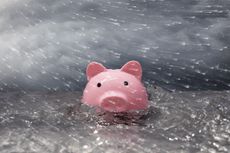 Stock Markets Are Tanking: Here’s How Retirees Can Weather the Storm
Stock Markets Are Tanking: Here’s How Retirees Can Weather the StormTreasury Secretary Scott Bessent says retirees don't pay attention to the day-to-day fluctuations in the stock market, but should you?
By Donna Fuscaldo Published
-
 Good News: Most Companies Are Still Committed to 401(k)s
Good News: Most Companies Are Still Committed to 401(k)sA MetLife study shows most companies are committed to 401(k) employee plans, even amid economic turmoil.
By Christy Bieber Published
-
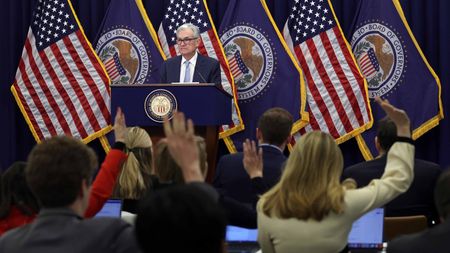 Fed Leaves Rates Unchanged: What the Experts Are Saying
Fed Leaves Rates Unchanged: What the Experts Are SayingFederal Reserve As widely expected, the Federal Open Market Committee took a 'wait-and-see' approach toward borrowing costs.
By Dan Burrows Published
-
 Fed Sees Fewer Rate Cuts in 2025: What the Experts Are Saying
Fed Sees Fewer Rate Cuts in 2025: What the Experts Are SayingFederal Reserve The Federal Reserve cut interest rates as expected, but the future path of borrowing costs became more opaque.
By Dan Burrows Published
-
 Fed Cuts Rates Again: What the Experts Are Saying
Fed Cuts Rates Again: What the Experts Are SayingFederal Reserve The central bank continued to ease, but a new administration in Washington clouds the outlook for future policy moves.
By Dan Burrows Published
-
 Fed Goes Big With First Rate Cut: What the Experts Are Saying
Fed Goes Big With First Rate Cut: What the Experts Are SayingFederal Reserve A slowing labor market prompted the Fed to start with a jumbo-sized reduction to borrowing costs.
By Dan Burrows Published
-
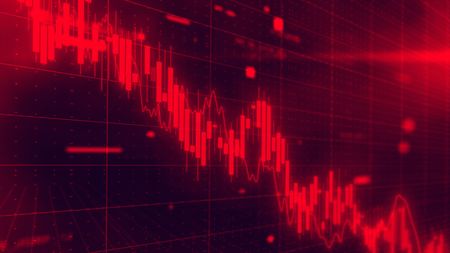 Stock Market Today: Stocks Retreat Ahead of Nvidia Earnings
Stock Market Today: Stocks Retreat Ahead of Nvidia EarningsMarkets lost ground on light volume Wednesday as traders keyed on AI bellwether Nvidia earnings after the close.
By Dan Burrows Published
-
 Stock Market Today: Stocks Edge Higher With Nvidia Earnings in Focus
Stock Market Today: Stocks Edge Higher With Nvidia Earnings in FocusNvidia stock gained ground ahead of tomorrow's after-the-close earnings event, while Super Micro Computer got hit by a short seller report.
By Karee Venema Published
-
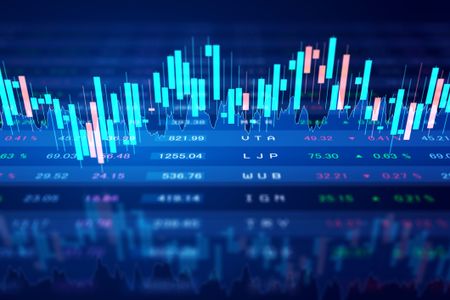 Stock Market Today: Dow Hits New Record Closing High
Stock Market Today: Dow Hits New Record Closing HighThe Nasdaq Composite and S&P 500 finished in the red as semiconductor stocks struggled.
By Karee Venema Published
-
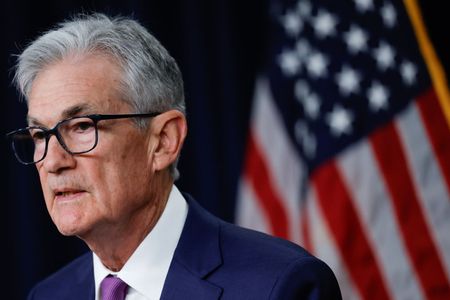 Stock Market Today: Stocks Pop After Powell's Jackson Hole Speech
Stock Market Today: Stocks Pop After Powell's Jackson Hole SpeechFed Chair Powell's Jackson Hole speech struck a dovish tone which sent stocks soaring Friday.
By Karee Venema Published